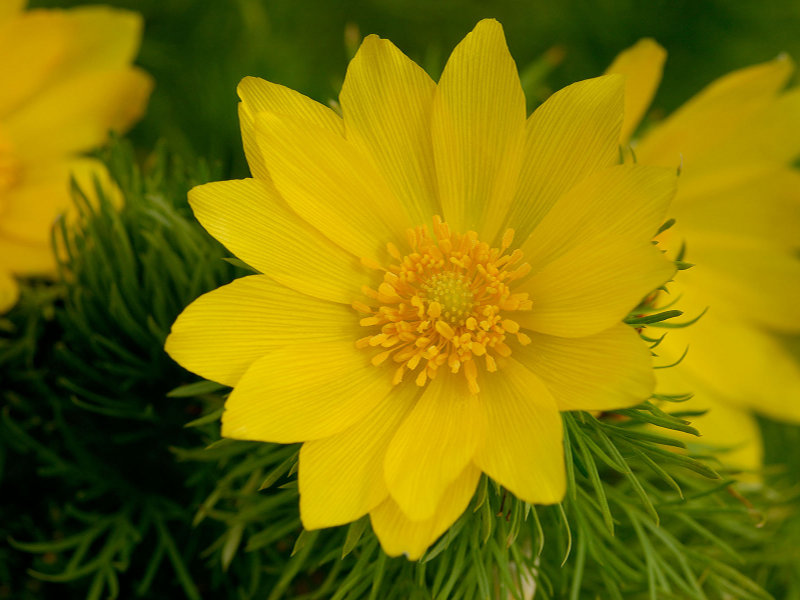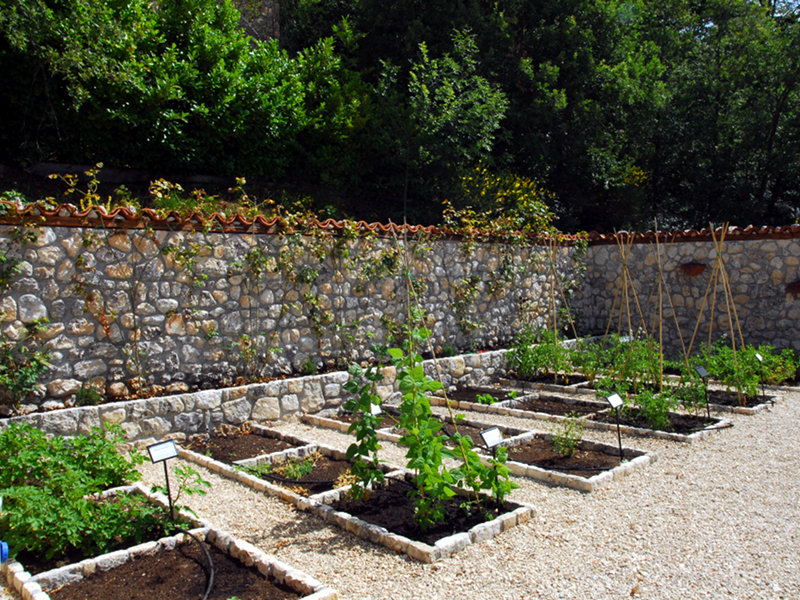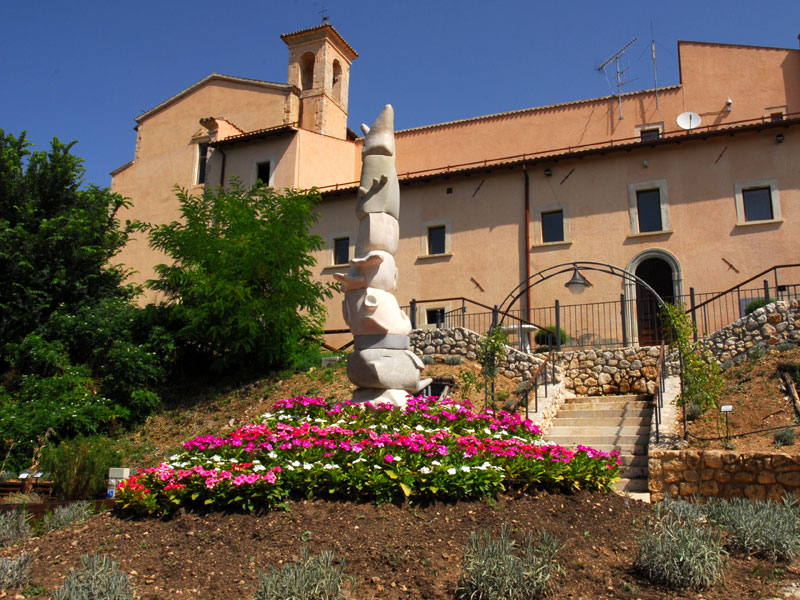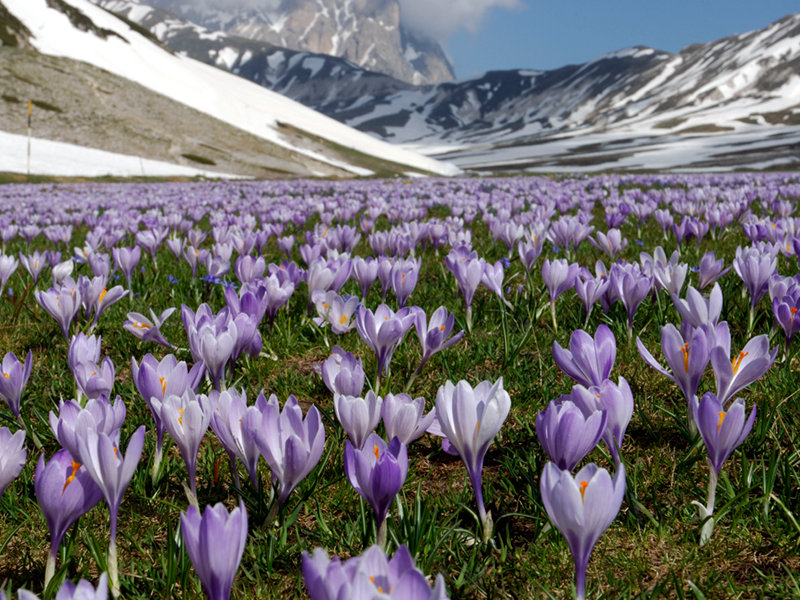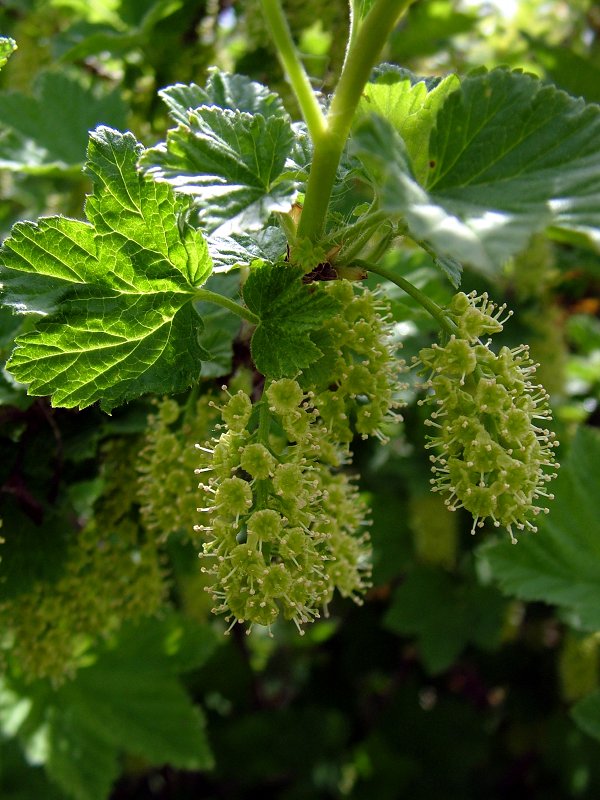Home » Territory, Nature » Flora
Apennine Floristic Research Center
A flowering Park
How many and what plants has been taken a census of?What are the rarest, the most striking and the oddest ones?
Are still unknown plant species being discovered?
How can some endangered plants be protected?
The botanists of the CRFA (Centro di Ricerche Floristiche dell'Appennino) will be able to answer these and other questions, thanks to a steady and thorough research work keeping them busy both with field researches and in the laboratories, with the aim to know and effectively protect our plant-diversity, which is one of the basic natural resources in our planet.
At the CRFA you will get acquainted with the job of botanists: it is a fascinating profession having ancient origins which has evolved thanks to the recent technologies and to a faster knowledge exchange between researches from different countries.
Among the main activities of the researchers there are: floristic census, monitoring of rare plants, studies for the identification and classification of plant species, in situ and ex situ conservation actions for the floristic rarities within the Park's territories. As a keeper of the floristic knowledge of the Abruzzi Region, the CRFA takes part in many projects on a national and international level, and it represents the point of reference of Italian and foreigner botanists who consult its collections and databases.
The CRFA welcomes students and trainees carrying out researches or writing degree theses, and it organizes courses, seminars and other activities to analyze in depth the themes of the plant diversity.
Scientific Research Activities in the floristic fields (Italian text)
Didactic course "Un Giorno da Florista" (Italian text)
Interactive guide on trees, shrubs and lianas of the Park (Italian text)
At the CFRA you will be able to visit or consult:
- The Botanical Vegetable Garden
- The Flower Museum
- The Herbarium Apenninicum, a collection of pressed and dried plants kept in controlled humidity and temperature conditions, acknowledged by the Index Herbarium - the worldwide network of herbaria with minimum requirements established by international organisms - with the acronym APP. The herbarium holds 65,000 samples, 40,000 of which have been computerized and organized according to criteria that make their use easier. There are many "typi", that is many finds officially representing the new species for the science, such as the very rare Genista pulchella subsp. aquilana, that lives only in the Park and cannot be found in any other part of the world.
- The historical herbaria dating back to 1800 that, among the others, include species that are extinct in the Abruzzi, such as the Dracunculus vulgaris and the Achillea maritima.
- The Library, which keeps about 2,700 titles, especially dealing with botany, among guides, monographs and specialized magazines.
- The Italian Flora Database, with the up-to-date nomenclature and regional distribution, and the GIS of the Abruzzi's flora, with all the bibliographical and herbarium data, all standardized and geo-referenced. The databases represent very useful tools for the local entities for the territorial planning and the natural emergencies protection.
- The Laboratory
Contacts: Via Provinciale km 4,2 - 67021 Barisciano (AQ)
Ph. and Fax +39 0862 899025 - E-mail: crfa@gransassolagapark.it
![]() Download the Brochure of the Center (1,7Mb - Italian text)
Download the Brochure of the Center (1,7Mb - Italian text)
Further information (Italian text)
The Center, the Botanical Vegetable Garden and the Flower Museum are open according to opening times that differ depending on the period of the year. For further information and guided visits: www.gransassolagapark.it - Ph. +39 0862 899025 - mobile ph. +39 339 3773303 - E-mail: crfa@gransassolagapark.it
